Related Links:
ENR 2024 Top Owners Sourcebook (Articles)
ENR 2024 Top Owners Sourcebook (PDF)
(Subscription Required)
Impacts from interest rate hikes aren’t yet visible in the Top 425 Owners ranking, with construction-in-progress spending on the rise last year boosted by federally-funded megaprojects. But amid new second-quarter construction activity, economists warn that megaprojects can be a double-edged sword for owners and contractors—creating resource-intensive hotspots in some sectors and freezeups in others.
A portfolio of federal infrastructure spending packages shepherded by the Biden administration—such as the Bipartisan Infrastructure Law, CHIPS and Science Act and Inflation Reduction Act—are skewing the construction market’s economic indicators, particularly as more megaprojects reach the shovel-ready phase, explains Anirban Basu, chairman and CEO of Sage Policy Group, and chief economist for the Associated Builders and Contractors (ABC).
Recent “macroeconomic data will indicate lots of construction volume because many of these megaprojects are moving forward,” he says, adding that competition for market share among owner giants such as Amazon, Microsoft, Meta and car manufacturers is also driving construction activity.
“Multifamily construction is forecasted to post a large decline in 2024.”
Danushka Nanayakkara-Skillington, National Association of Home Builders, Assistant Vice President for Forecasting and Analysis
“These goliath companies are competing for global dominion. So whether in the realm of batteries, electric vehicles, semiconductor chips or other critical commodities, “this battle of the titans is driving a lot of construction,” he says.
Yet despite a flurry of construction activity in some sectors, others are slowing down due to changes in consumer spending, a real estate development downturn and the transition to renewable energy resources, explains Basu.
“In some segments, you have economic weakness, and with the cost of capital having risen and interest rates higher for longer, inflation data has come in hot recently,” he says, adding that the cost of delivering construction services has also increased. According to Basu: “Prices rose significantly in March in nonresidential construction, [and] a lot of project owners are saying no to going forth with projects right now.” He adds that many “are saying it’s too expensive; my pro forma is not canceling out. So you really have a tale of two sectors.”
Rising Construction Costs
Construction input prices rose 0.4% in March compared to February, says an ABC analysis of U.S. Bureau of Labor Statistics Producer Price Index data released in April.
Additionally, the group reported that nonresidential construction input prices also increased 0.4% for the month—about 1.7% higher than a year ago. Basu cites the rise as “growing evidence of resurfacing inflationary pressures in the nation’s nonresidential construction segment.”
Among many factors influencing the cost increase, according to Basu, is a rise in worker compensation across the global construction industry. This “most consistent factor” in the price hikes is compounded by limited construction resources linked to contractor shortages, materials delays and insufficient skilled workers needed to move projects forward, he says. “That is something that is common across construction segments, common across the country,” Basu contends.
What the Numbers Show
In its Job Openings and Labor Turnover Summary survey released April 2, the bureau reported marginal change in filling the reported 8.8 million jobs available in February, which included around 441,000 construction industry job openings, according to an ABC analysis.
“During the most recent month, the number of open, unfilled construction positions stood at the second highest level in the history of the series,” says Basu, although adding that there’s more to the numbers.
“While these dynamics are emblematic of ongoing industry wide labor shortages, contractors also laid off workers at an elevated rate throughout February,” he said in a contractor group statement related to the federal agency survey. But Basu also noted in the group’s own Construction Confidence Index that despite high borrowing costs on projects reliant on private funding, fewer than 11% of contractors expected staffing levels to decrease over the next six months. “This suggests a schism in which certain construction segments powered by federal funding and incentives continue to generate tremendous demand for labor, while privately financed segments had somewhat slower growth,” he says.
According to Basu, emerging supply chain issues also are driving up construction costs, linked to global climate and political crises such as low water levels slowing cargo traffic at the Panama Canal, the Russia-Ukraine war and attacks on commercial shipping vessels in the Red Sea. In the U.S., the collapse of a major bridge in Baltimore after a March 26 ship strike—which resulted in temporary closure of the Port of Baltimore and new restrictions—has also heightened concerns about supply chain impacts and cost increases, which could lead to some project delays, explains Basu.
“We thought supply chain issues were solved at the end of the pandemic; all of a sudden we are starting to see some pressures on shipping costs. We are also seeing certain materials prices rise, like the price of copper,” he says. “Part of this is because we have megaprojects that are just soaking up so much of the construction material that [it] drives up the price for everybody.”
Basu adds, “Users of construction services, as a general proposition, can expect to experience elevated costs for the foreseeable future.”
Construction Spending Barrels Ahead
Despite the Federal Reserve’s efforts to set higher interest rates aimed at cooling the economy and curtailing rising inflation, total construction-in-progress spending for the ENR Top 425 Owners rose 7.62% on this year’s survey— to $545.2 billion— from $506.59 billion on last year’s report.
“Innovation is important, exciting ... for its ability to advance those other things we’re trying to work on: safety, jobs, climate, equity.”
U.S. Transportation Secretary Pete Buttigieg
The Top 25 largest listed firms accounted for a majority of that spending in 2023, about 60%, rising to $301.62 billion from $261.99 billion in 2022. The median for 2023 construction spending reported on the current list fell 18.4%, to $269.1 million, from $329.9 million in 2022. Also, total construction-in-progress spending for the list’s lowest-ranked 100 firms dropped 28.7% compared to that of last year’s equivalently ranked companies.
The federal labor statistics bureau said on April 11 that the consumer price index rose 3.5% year-over-year in March, markedly faster than February’s 3.2% pace. Barron’s reported that housing and gasoline cost upticks contributed to the price index boost, with some surveyed economists expecting an annual 3.4% hike.
The labor statistics agency said core inflation levels in March reached 3.8% year-over-year, about the same level in February and only marginally higher than the 3.7% year-over-year gain expected by surveyed economists, Barron’s reported.
More Construction Cost Impact
With the inflation annual rate still far above the target Federal Reserve rate of 2%, Basu says the period of high interest rates is likely to be prolonged, further driving up construction costs—with medium-sized and smaller projects most affected but megaprojects unlikely to feel the impacts.
“There had been this thought coming into the beginning of the year that the Federal Reserve would cut rates as many as six or seven times. Now that estimate is down to one or two times,” says Basu. “The projects that are moving forward are benefitting from government support, whether it’s infrastructure or through public-private partnerships coming out of the Chips and Science Act.”
Beyond megaprojects, recent construction starts reports from Dodge Construction Network indicate there may be a slight delay before the industry feels the full effects of higher interest rates. But a downturn impact is apparent, Dodge Construction Network Chief Economist Richard Branch reports.
Charybdis, he first U.S.-made offshore wind energy installation vessel, “is key to continued development of a domestic supply chain."
Bob Blue, CEO, Dominion Energy Inc.
“Starts struggled over the past several months as the lagged effect of higher rates impacted projects moving through the planning process,” he says, adding that construction was “hit hard by higher rates and more restrictive credit standards.”
In February, total construction starts fell 8% to a seasonally adjusted annual rate of $1.07 trillion, Dodge reported. Nonresidential building starts dropped 16%, to an adjusted annual rate of $407 billion, and nonbuilding starts fell 3%, to an adjusted annual rate of $275 billion.
Also, highway and bridge project starts lost 17% in February, and environmental public works dropped 8%, Dodge said. Utility gas starts gained 13% and miscellaneous nonbuilding starts rose 48%. “While optimism should prevail in the second half of the year as the Federal Reserve begins to cut rates, some sectors like commercial [building] will make little headway over the remainder of the year,” says Branch.
According to Dodge data, the largest nonresidential building projects to break ground in February included the Hollywood Burbank Airport replacement project in California, with an estimated $1.2- billion price tag; the $1.6-billion LG Chemical battery plant in Tennessee; and the $1.8-billion Redwood Materials battery recycling facility in South Carolina.
asked whether megaprojects are worth the immediate and potential long-term financial and materials challenges they bring to the construction market, Basu says it depends on who you ask.
“The fact that we are regaining our market share in semiconductor manufacturing, the fact that we are seeing more electrical vehicle manufacturing [in the U.S.], I think people by and large will say that’s a good thing macroeconomically,” he says. “But if you’re somebody trying to develop an office project and need contractor and subcontractor capacity, and it’s just not there, from [that person’s] perspective, it’s not worth it because [they] can’t move forward with [their] economic activities.”
A Changing Construction Climate
Climate change is adding to economic complexity and project risks, with historic climatic design data becoming less illustrative of current and long term conditions, according to Charles Hardy, chief architect of the U.S. General Services Administration.
“We are starting to integrate both observed and expected change in the climate and extreme weather into planning and design over asset service life,” he says. Previously, conversations about climatic risk were confined to specific projects, but have now become “routine,” Hardy says.
The U.S. “is accelerating transition to a clean energy future, but action is also being taken to manage [it] in the near term.”
U.S Maritime Administration in approving the estimated $1.8B Sea Port oil terminal in Texas
The federal agency plans to invest $30 million to boost sustainability of federal buildings through its Green Proving Ground program, he says. The program evaluates 20 novel sustainable technologies in real-world settings using the agency’s 350-million-sq-ft real estate footprint as the testing ground. The hope is that some of the technologies can help it reach zero carbon by 2045, notes Hardy.
In the healthcare sector, the drive to reduce energy usage is a constant, says Kyle Majchrowski, senior project executive at Banner Health, which operates 30 hospitals and several specialized facilities across six states. “That’s a pure bottom line expense,” he says, adding that the Phoenix-based company put together a small team within its facilities group, called the remote operations center, to focus on energy use within Banner facilities.
Designing a building to new and more energy efficient standards can generate complications for those in operations and maintenance, says Shawn Kelly, a General Services Administration project manager.
“[Our building management employees] are used to maintaining a 100-year-old building. Then we go in and spend $100 million to modernize it. We give them a Ferrari when they know how to maintain a Pinto,” Kelly says.
Banner Health’s remote operations center team helps locate, implement and execute complex building management systems, says Majchrowski.
Energy Transition Challenges
“The increasing scale and complexity of modern semiconductor fabs brings them firmly into the ‘megaproject’ category.”
Catherine Hunt Ryan, President, Bechtel Manufacturing & Technology
Duke Energy Corp. now faces the challenge of managing a very full plate of projects related to energy transition, says Andy Browning, general manager of engineering and construction services at the utility company. He estimates that firm construction will be five to ten times larger in 2025 than it is now. With many other utilities also loading up on new projects, he wonders if all the work can be physically done.
“I think it would be interesting for somebody to [aggregate] the data for the next 5 to 10 years for the utility industry and [quantify sector needs],” he says. “As a country, we’ve never done that much work ever in this sphere of the industry. Where are the choke points?”
A ‘Recession Delayed’
In an April 18 update on the performance and impact of the Inflation Reduction Act, Assistant Treasury Secretary for Economic Policy Eric Van Nostrand called the law a “long-term investment in America’s future.” In effect, he said, “it will be years before we can fully assess its comprehensive impact, but we can see early signs of impact in the data, and the data we have seen over the past several months are promising.”
According to Van Nostrand: “Government investment like this .... that expands America’s productive capacity while combating climate change, is a clear example of what [Treasury Secretary] Janet Yellen calls ‘modern supply side economics,’ policy that spurs economic growth and addresses inequality or other social ills.”
Economic data right now shows plentiful momentum, says Basu, but he anticipates that Fed rate hikes will end in a recession. “I think it’s recession delayed,” he says. “Maybe it’s late 2024. Maybe it’s 2025, maybe it’s 2026. I might have the timing completely wrong. But these higher interest rates for longer gives them more time to impact current economic momentum.”
The economist points to several major bank failures last year. “The banking segment has become more conservative with its lending, particularly with respect to real estate,” he says. “So you put all that together and there still will be some vulnerabilities in the economy that will produce a mild downturn.”
Associated General Contractors of America Chief Economist Ken Simonson has a different take on how strongly higher interest rates will affect the construction business.
“Construction is really barreling along,” he says. As 2024 progresses, “those forecasts showing that we would see at least a mild recession now are talking about the economy being very strong.”
Even as the Federal Reserve most likely will not make rate cuts until closer to next year, Simonson says there is still an abundance of energy and industrial projects that are not as sensitive to rate hikes and will keep economic activity strong for construction.
“While I’ve continued to disagree with many economists and market analysts about what to expect from the Fed or from the overall economy, I still think the prolongation of higher interest rates is not going to be fatal to most nonresidential construction,” says Simonson.








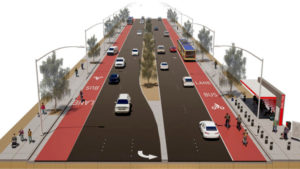
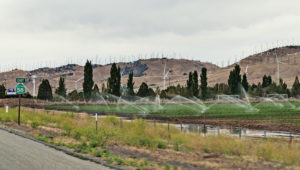
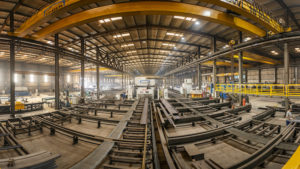
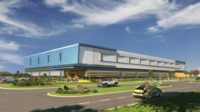
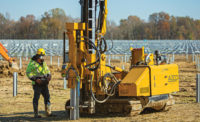
Post a comment to this article
Report Abusive Comment